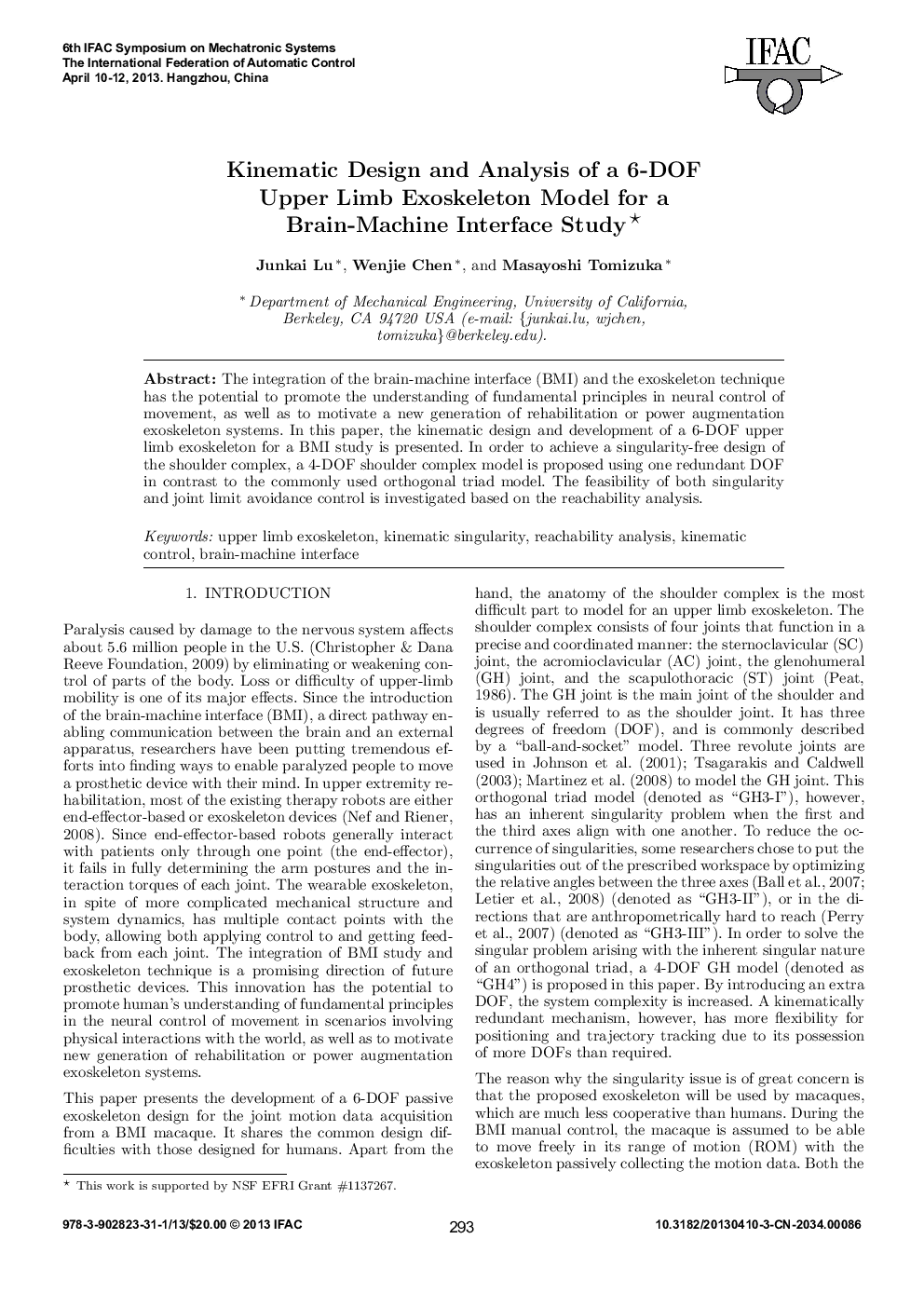| Article ID | Journal | Published Year | Pages | File Type |
|---|---|---|---|---|
| 709489 | IFAC Proceedings Volumes | 2013 | 8 Pages |
Abstract
The integration of the brain-machine interface (BMI) and the exoskeleton technique has the potential to promote the understanding of fundamental principles in neural control of movement, as well as to motivate a new generation of rehabilitation or power augmentation exoskeleton systems. In this paper, the kinematic design and development of a 6-DOF upper limb exoskeleton for a BMI study is presented. In order to achieve a singularity-free design of the shoulder complex, a 4-DOF shoulder complex model is proposed using one redundant DOF in contrast to the commonly used orthogonal triad model. The feasibility of both singularity and joint limit avoidance control is investigated based on the reachability analysis.
Related Topics
Physical Sciences and Engineering
Engineering
Computational Mechanics
